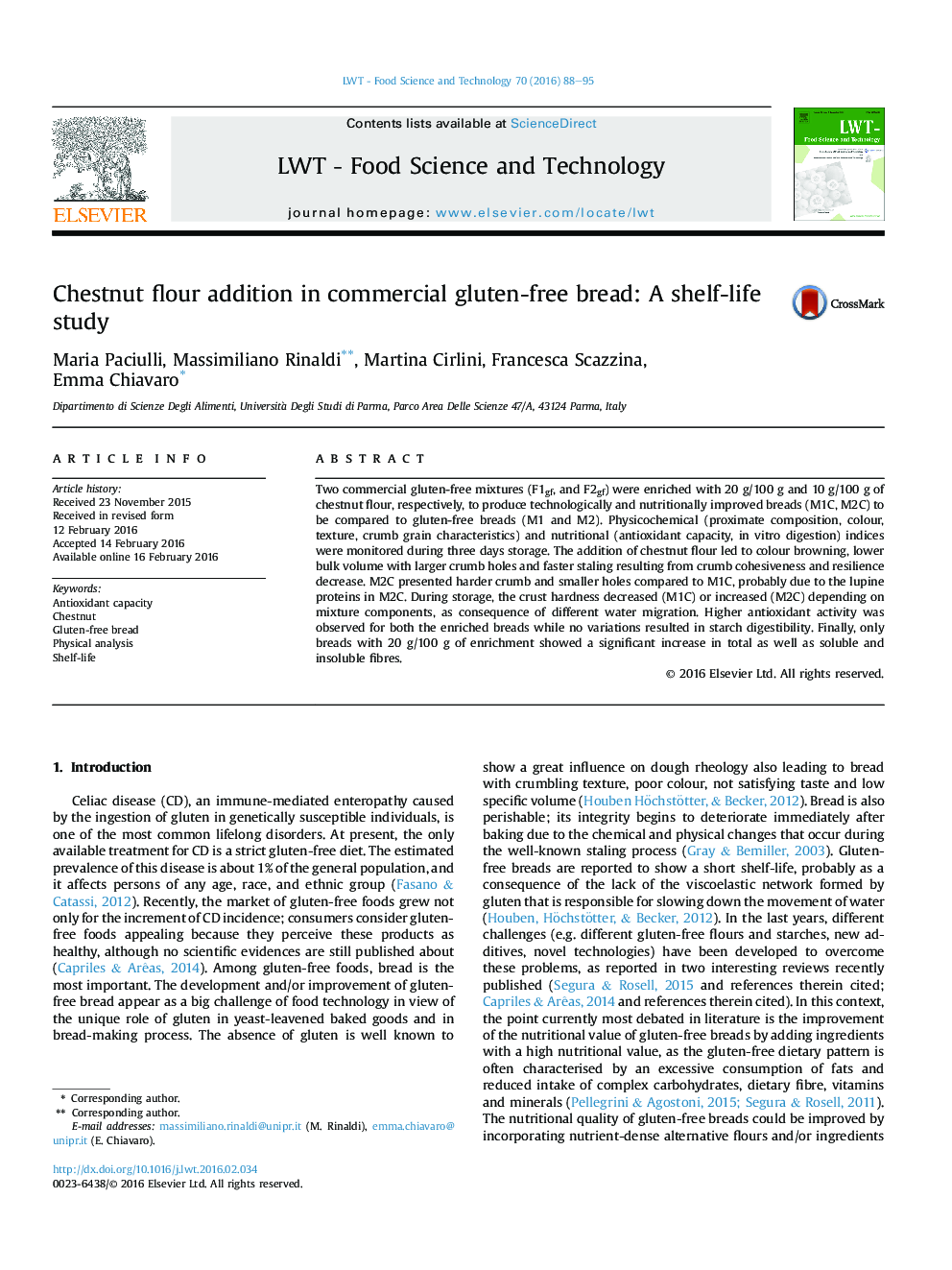| Article ID | Journal | Published Year | Pages | File Type |
|---|---|---|---|---|
| 4563571 | LWT - Food Science and Technology | 2016 | 8 Pages |
•Chestnut flour addition to commercial gluten-free mixtures for bread-making and shelf-life was studied.•The ingredients of the gluten free mixtures led to dissimilar loaves for texture and moisture dynamics.•Gluten-free breads enriched with chestnut flour presented a darker colour.•Higher fibre content and antioxidant activity was observed for enriched breads.•No differences in starch digestibility were observed in all the samples.
Two commercial gluten-free mixtures (F1gf, and F2gf) were enriched with 20 g/100 g and 10 g/100 g of chestnut flour, respectively, to produce technologically and nutritionally improved breads (M1C, M2C) to be compared to gluten-free breads (M1 and M2). Physicochemical (proximate composition, colour, texture, crumb grain characteristics) and nutritional (antioxidant capacity, in vitro digestion) indices were monitored during three days storage. The addition of chestnut flour led to colour browning, lower bulk volume with larger crumb holes and faster staling resulting from crumb cohesiveness and resilience decrease. M2C presented harder crumb and smaller holes compared to M1C, probably due to the lupine proteins in M2C. During storage, the crust hardness decreased (M1C) or increased (M2C) depending on mixture components, as consequence of different water migration. Higher antioxidant activity was observed for both the enriched breads while no variations resulted in starch digestibility. Finally, only breads with 20 g/100 g of enrichment showed a significant increase in total as well as soluble and insoluble fibres.
